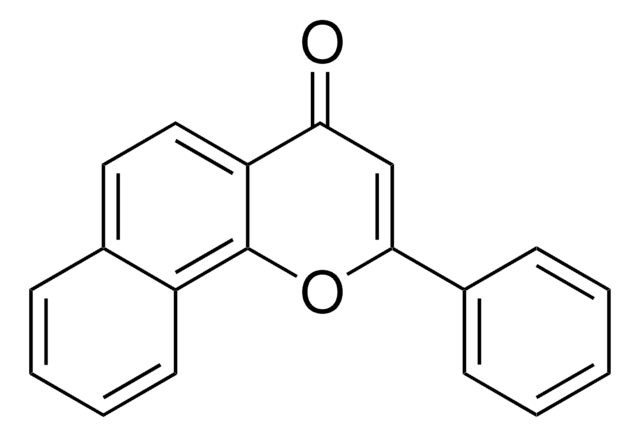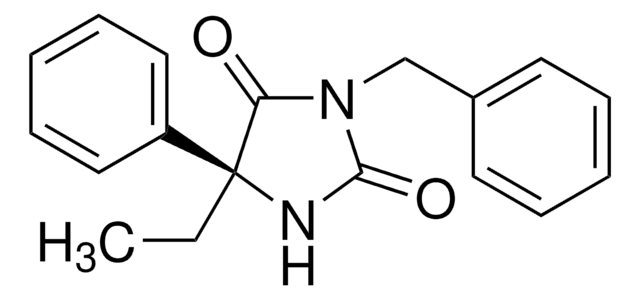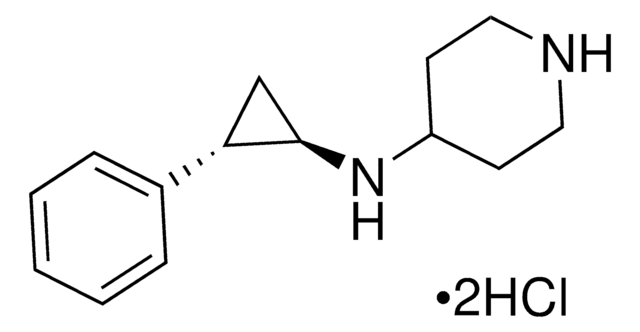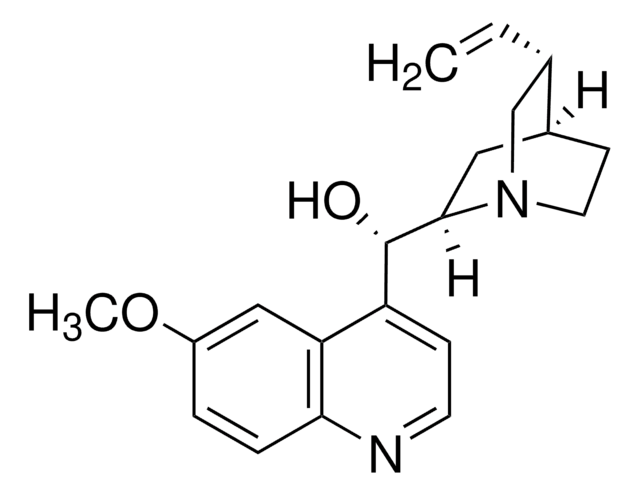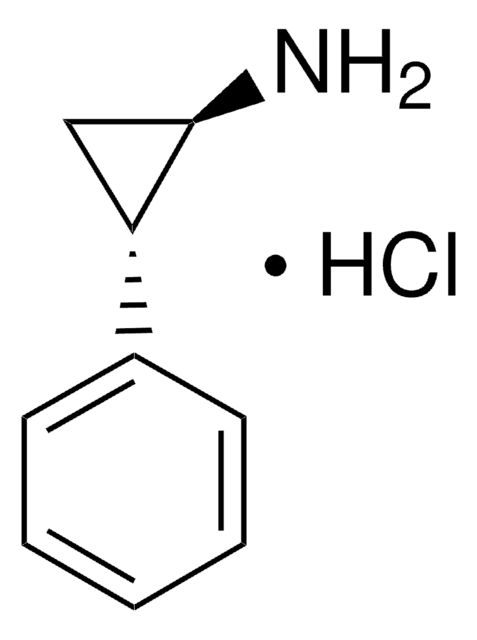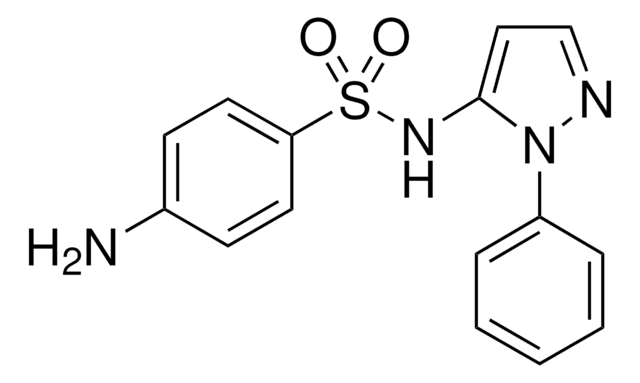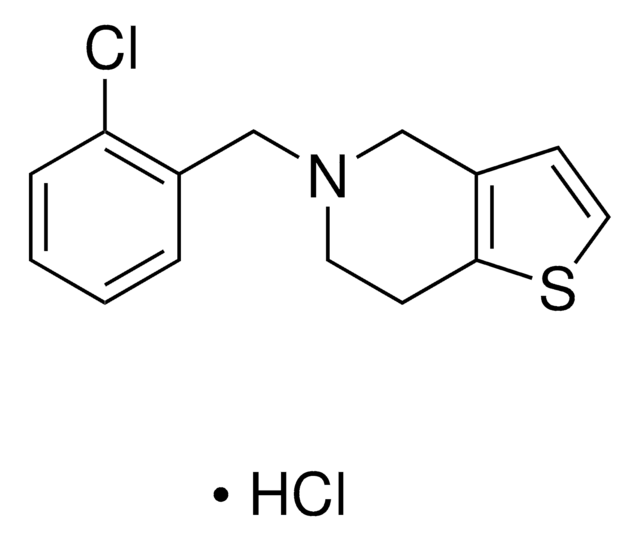P8511
trans-2-Phenylcyclopropylamine hydrochloride
Sinônimo(s):
Tranylcypromine
About This Item
Produtos recomendados
fonte biológica
synthetic (organic)
Ensaio
≥97% (TLC)
Formulário
powder
pf
162-169 °C (lit.)
solubilidade
ethanol: 50 mg/mL, clear to slightly hazy
temperatura de armazenamento
2-8°C
cadeia de caracteres SMILES
Cl.N[C@@H]1C[C@H]1c2ccccc2
InChI
1S/C9H11N.ClH/c10-9-6-8(9)7-4-2-1-3-5-7;/h1-5,8-9H,6,10H2;1H/t8-,9+;/m0./s1
chave InChI
ZPEFMSTTZXJOTM-OULXEKPRSA-N
Informações sobre genes
human ... MAOA(4128) , MAOB(4129)
Procurando produtos similares? Visita Guia de comparação de produtos
Ações bioquímicas/fisiológicas
Características e benefícios
Palavra indicadora
Danger
Frases de perigo
Declarações de precaução
Classificações de perigo
Acute Tox. 3 Oral
Código de classe de armazenamento
6.1C - Combustible acute toxic Cat.3 / toxic compounds or compounds which causing chronic effects
Classe de risco de água (WGK)
WGK 3
Escolha uma das versões mais recentes:
Já possui este produto?
Encontre a documentação dos produtos que você adquiriu recentemente na biblioteca de documentos.
Os clientes também visualizaram
Artigos
Epigenetic modifications are thought to occur through two key interconnected processes—DNA methylation and the covalent modification of histones.
Conteúdo relacionado
Discover Bioactive Small Molecules for ADME/Tox
Nossa equipe de cientistas tem experiência em todas as áreas de pesquisa, incluindo Life Sciences, ciência de materiais, síntese química, cromatografia, química analítica e muitas outras.
Entre em contato com a assistência técnica